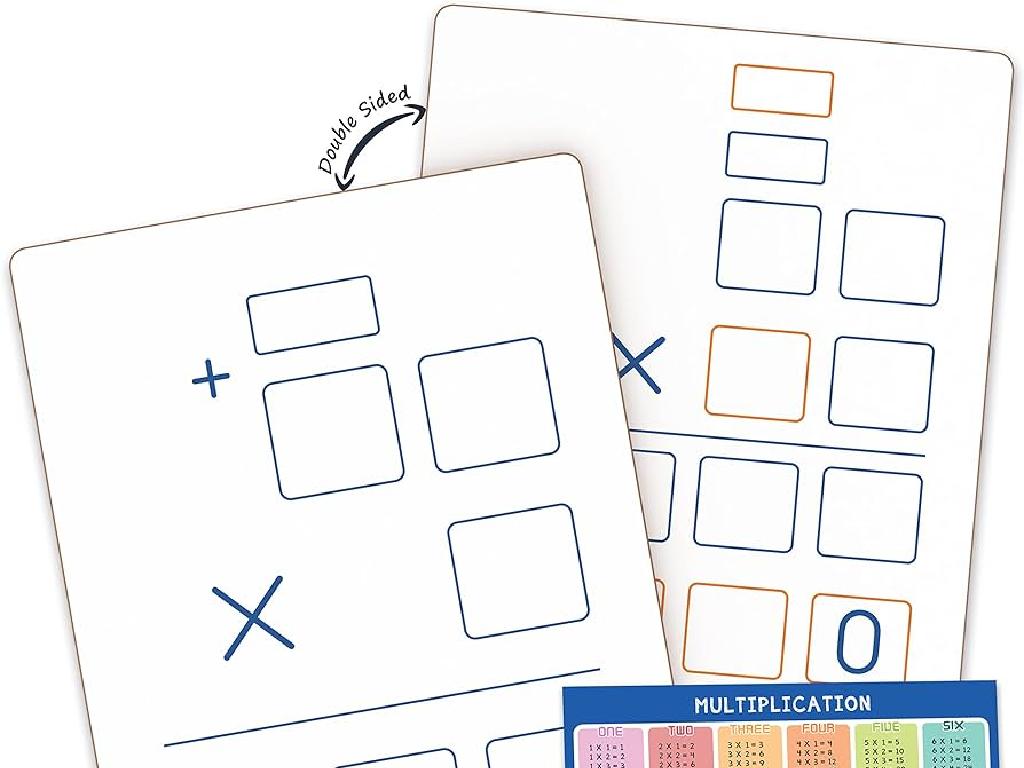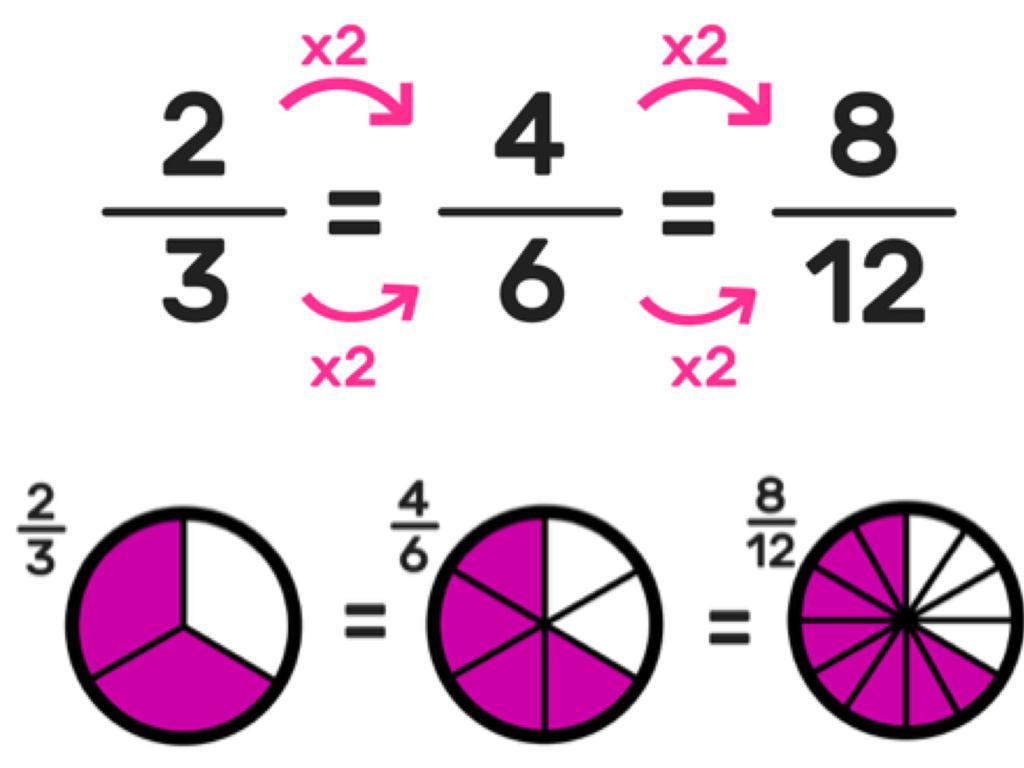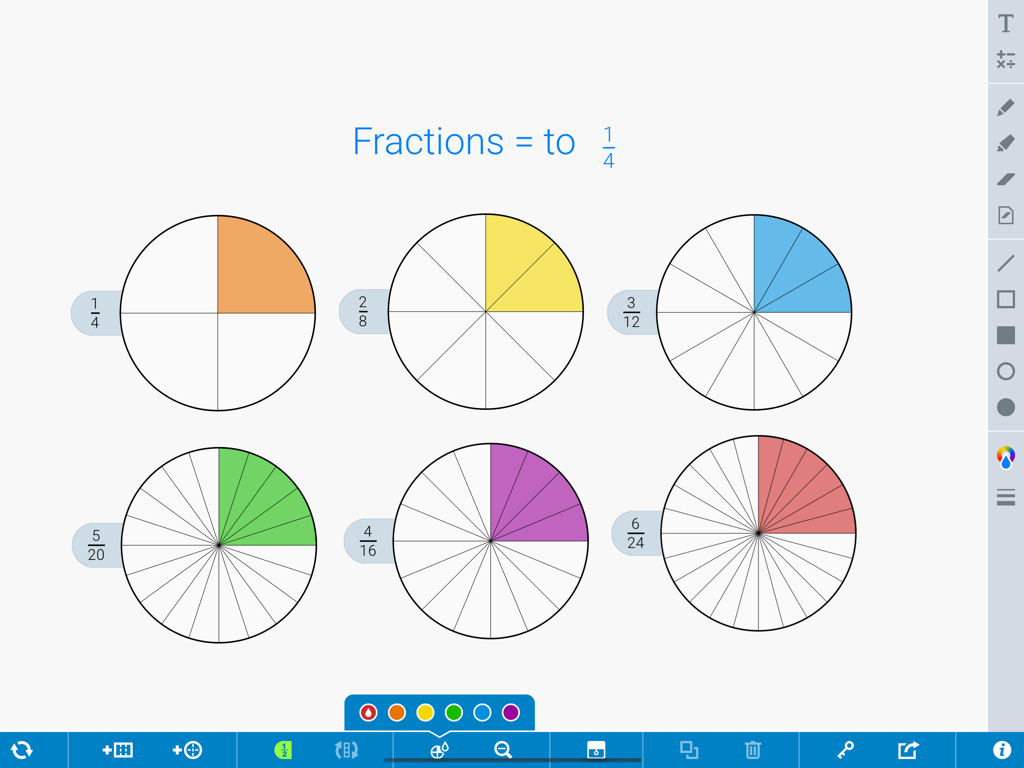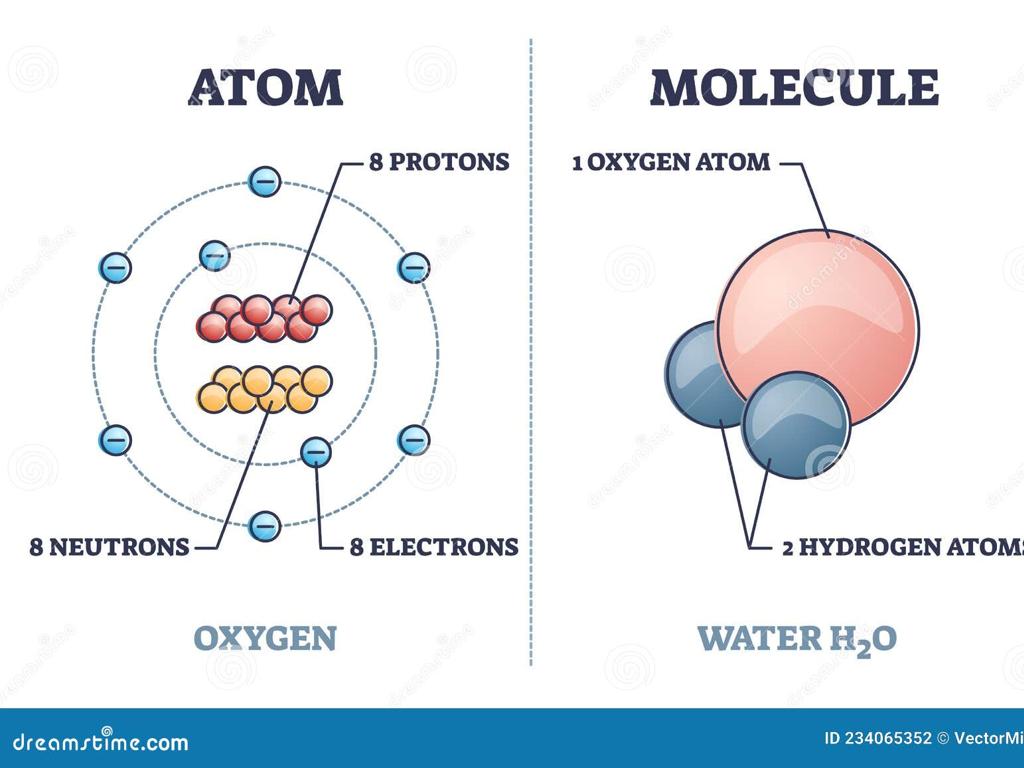Animal Cell Diagrams: Label Parts
Subject: Science
Grade: Fifth grade
Topic: Cells
Please LOG IN to download the presentation. Access is available to registered users only.
View More Content
Exploring Animal Cells: The Building Blocks of Life
– Cells as life’s foundation
Cells are the smallest unit of life, making up all living things.
– Introduction to animal cells
Animal cells are a type of cell that make up animals’ bodies.
– Components of animal cells
Animal cells include parts like the nucleus, mitochondria, and more.
– Importance of each part
Each part of the cell has a unique and vital function for the cell’s survival.
|
This slide introduces the concept of cells as the basic building blocks of all life forms, with a specific focus on animal cells. It’s important to convey to the students that every living organism is made up of cells, and although they are microscopic, they are incredibly complex and essential for life. The slide will lead into a discussion about the various components of an animal cell, such as the nucleus, which acts as the control center, and the mitochondria, which are the powerhouses of the cell. Encourage students to think about the role each part plays, similar to how different rooms in a house have different functions. This will set the stage for a deeper dive into the structure and function of each cell component in subsequent lessons.
Exploring the Building Blocks of Life: Cells
– Cells: Basic unit of life
– Smallest living unit that makes up all organisms.
– Cells’ role in organisms
– Cells work together to keep organisms alive.
– Animal vs. Plant Cells
– Animal cells differ from plant cells in shape and organelles.
– Unique features of Animal Cells
|
This slide introduces the concept of cells as the fundamental unit of life, emphasizing their importance in the structure and function of all living organisms. Highlight the role of cells in carrying out life processes and maintaining homeostasis. Compare and contrast animal and plant cells, noting that animal cells lack a cell wall and chloroplasts but have centrioles. Discuss the unique features of animal cells, such as their flexible cell membrane and various specialized organelles. Encourage students to think about how cells work together in systems and the diversity of cell types in different organisms.
Exploring the Parts of an Animal Cell
– Identify animal cell parts
– Learn the names and locations of each part
– Functions: Nucleus, Cytoplasm, etc.
– Nucleus: control center, Cytoplasm: jelly-like fluid
– How cell parts interconnect
– Each part has a special job that helps the cell function as a whole
– The role of the cell membrane
– The cell membrane protects the cell and controls what goes in and out
|
This slide aims to introduce students to the basic structure and functions of an animal cell. Start by identifying each part of the cell, such as the nucleus, cytoplasm, and cell membrane. Explain the role of the nucleus as the control center of the cell, the cytoplasm as the site where most cellular activities occur, and the cell membrane’s function in protecting the cell and regulating the movement of substances. Emphasize the interconnectedness of cell parts and how they work together to maintain the cell’s life processes. Use diagrams to visually represent each part and provide clear examples to enhance understanding. Encourage students to ask questions and engage in activities that reinforce their learning.
The Nucleus: The Control Center of the Cell
– What is the Nucleus?
– The Nucleus is the brain of the cell, directing all activities.
– Nucleus: Cell’s command center
– It holds the DNA, which guides the cell’s growth, reproduction, and health.
– DNA: Blueprint of life in the Nucleus
– DNA in the Nucleus carries genetic information for all living things.
– Nucleus’ role in cell function
– The Nucleus sends instructions for the cell to work properly.
|
This slide introduces the Nucleus as a fundamental part of the animal cell, often referred to as the ‘brain’ or ‘control center’ of the cell. It’s important to convey to the students that the Nucleus is responsible for storing the cell’s DNA, which contains the instructions for building the body’s proteins and is essential for growth and reproduction. Emphasize the role of the Nucleus in regulating the activities of the cell by controlling which proteins are made. The analogy of the Nucleus as a ‘library’ containing ‘blueprints’ (DNA) for everything the cell needs to do can be helpful for students to understand its function. Encourage students to think of the Nucleus as the cell’s command center, sending out instructions to keep the cell running smoothly.
Mitochondria: The Powerhouse of the Cell
– Exploring the Mitochondria
– Mitochondria are organelles that generate the cell’s energy.
– How Mitochondria produce energy
– They convert nutrients into ATP, the cell’s energy currency.
– Energy’s role in cell functions
– Cells use energy to perform vital activities like growth and repair.
|
This slide introduces the mitochondria, an essential organelle within animal cells, often referred to as the ‘powerhouse’ because it generates most of the cell’s supply of adenosine triphosphate (ATP), used as a source of chemical energy. A deeper dive into the process of how mitochondria convert glucose and oxygen into ATP through cellular respiration will help students understand the importance of energy in maintaining cell functions such as muscle contraction, protein synthesis, and cell division. Encourage students to think of the mitochondria like a power plant, providing the energy needed for the city (the cell) to function properly.
Cell Membrane: The Security Guard of the Cell
– Structure of the Cell Membrane
– It’s like a flexible wall around the cell
– Cell Membrane: Protection & Regulation
– It acts like a gatekeeper, controlling entry and exit
– Semi-Permeability Explained
– Allows some things to pass, while blocking others
– Importance of the Cell Membrane
|
The cell membrane is a critical component of the animal cell, functioning as a barrier that protects the cell’s interior. It’s composed of a double layer of lipids and proteins that give it flexibility and strength. The membrane’s selective permeability is essential for maintaining the cell’s internal environment, allowing nutrients to enter, waste to exit, and preventing harmful substances from entering. This semi-permeable nature is due to the specific structure of the lipid bilayer and protein channels. Understanding the cell membrane’s role is fundamental for students as it sets the stage for learning about other cellular processes. Use diagrams to illustrate the structure and discuss how the membrane’s selective nature is vital for the cell’s survival.
Labeling the Parts of an Animal Cell
– Collaborative labeling exercise
– Use the word bank for guidance
– Match terms like ‘nucleus’, ‘mitochondria’ to the diagram
– Interactive discussion on cell parts
– Discuss the function of each part as we label
– Understanding each cell component
– Learn the role of each part in the cell’s life
|
This slide is designed to engage students in a hands-on activity to label the parts of an animal cell. Provide a diagram of an animal cell on a worksheet or on the board with blank labels. Have a word bank available with terms such as ‘nucleus’, ‘mitochondria’, ‘cytoplasm’, ‘cell membrane’, and others. As students select the correct term from the word bank, facilitate an interactive discussion on the function and importance of each cell part. This will help students not only memorize the parts but also understand their roles in the life of the cell. Encourage students to ask questions and share interesting facts they know about each cell component. This activity supports visual learning and reinforces vocabulary related to cell biology.
Class Activity: Craft Your Own Animal Cell Model
– Build a 3D animal cell model
– Use various craft materials
– Clay, beads, yarn, and more can represent cell parts
– Present and explain each cell part
– Describe the function of organelles like the nucleus, mitochondria, etc.
– Understand cell structure through creation
|
This hands-on activity is designed to help students learn about animal cells in a fun and interactive way. By creating a 3D model, students will be able to visualize the cell’s structure and understand the spatial relationships between organelles. Provide a variety of craft materials such as clay, beads, pipe cleaners, and yarn to represent different cell parts. Encourage creativity but also accuracy in their models. After completion, each student will present their model to the class, explaining the function of each part, which reinforces their learning. Possible variations of the activity could include working in pairs, creating models of different cell types, or even using edible materials to create the cell model.






